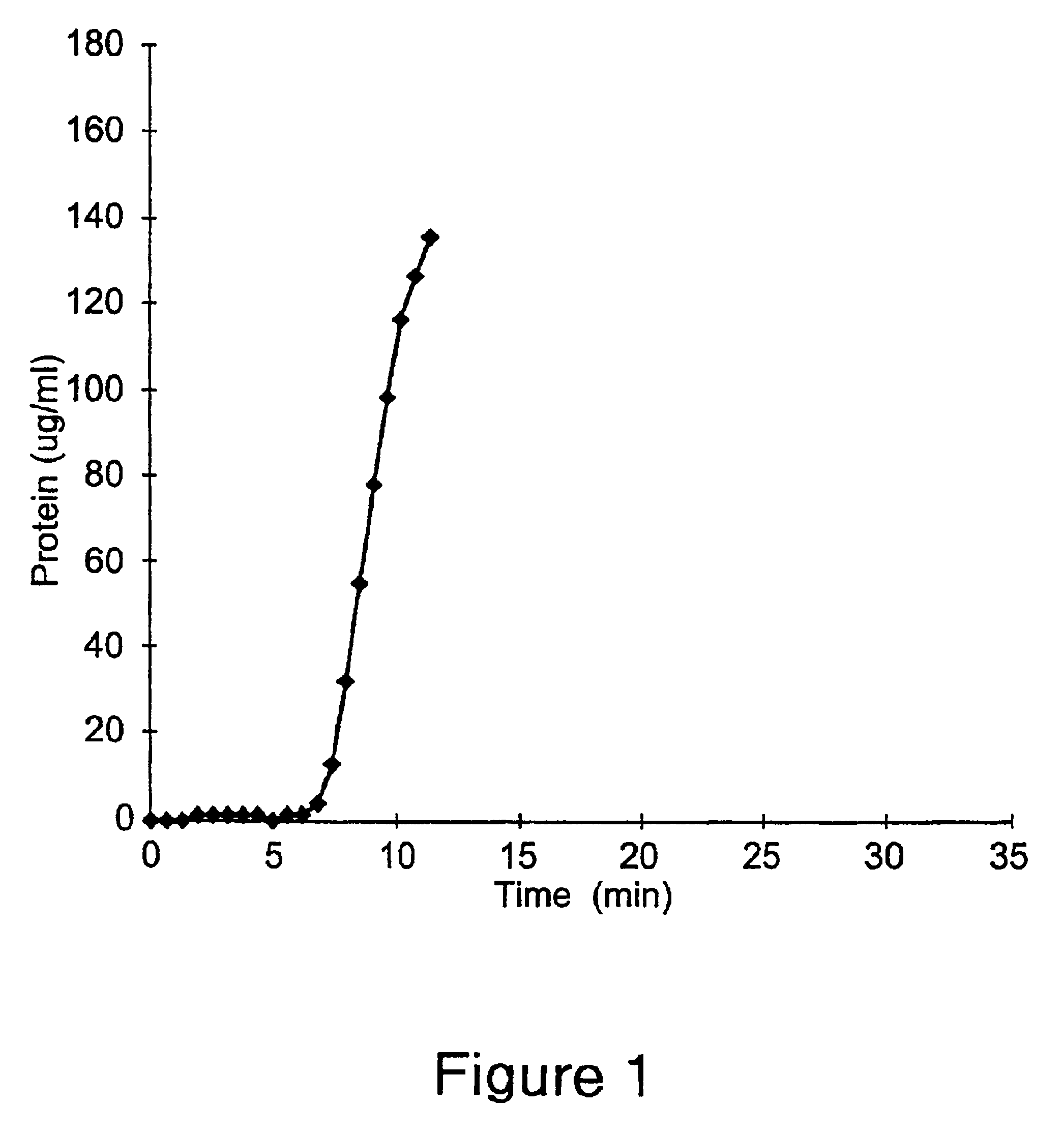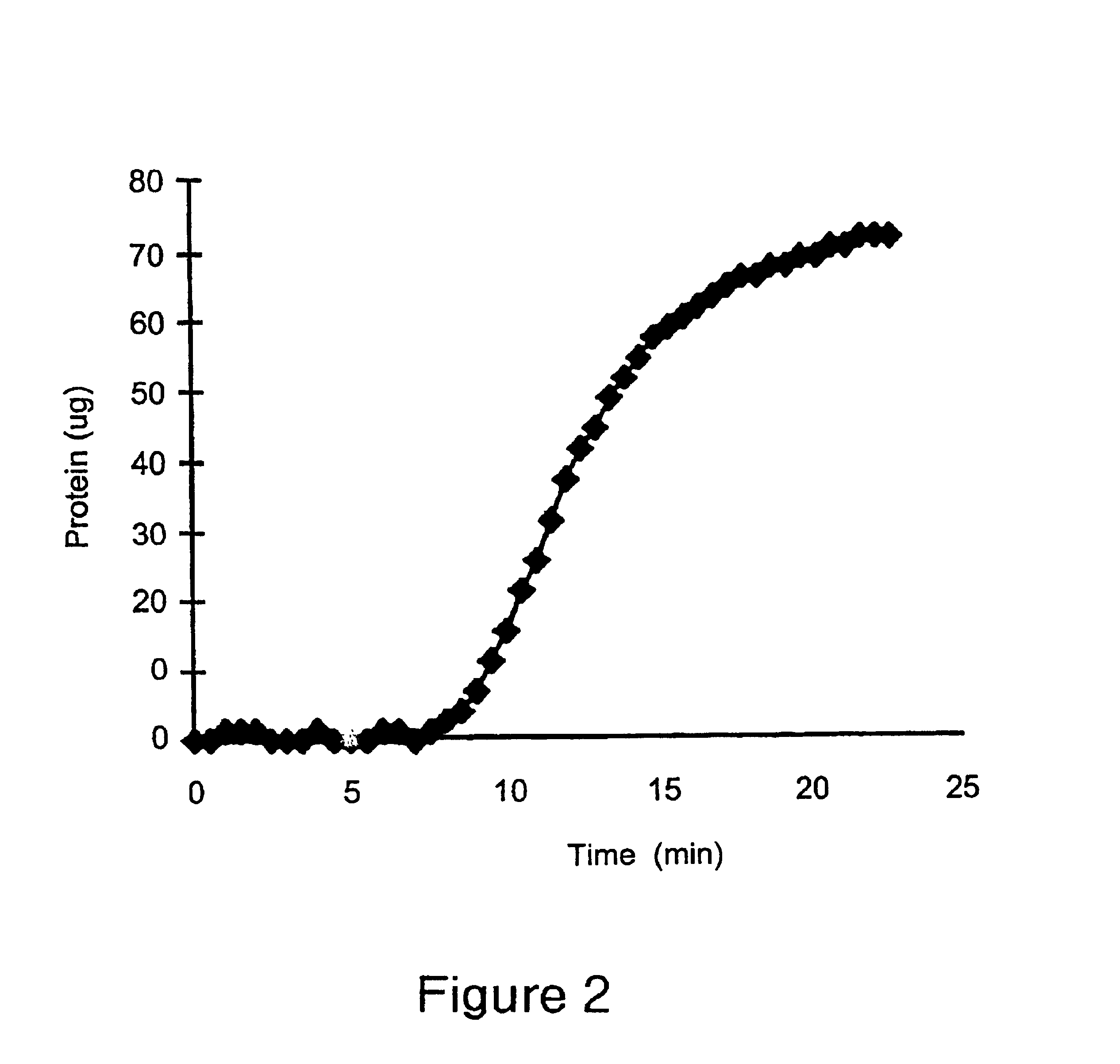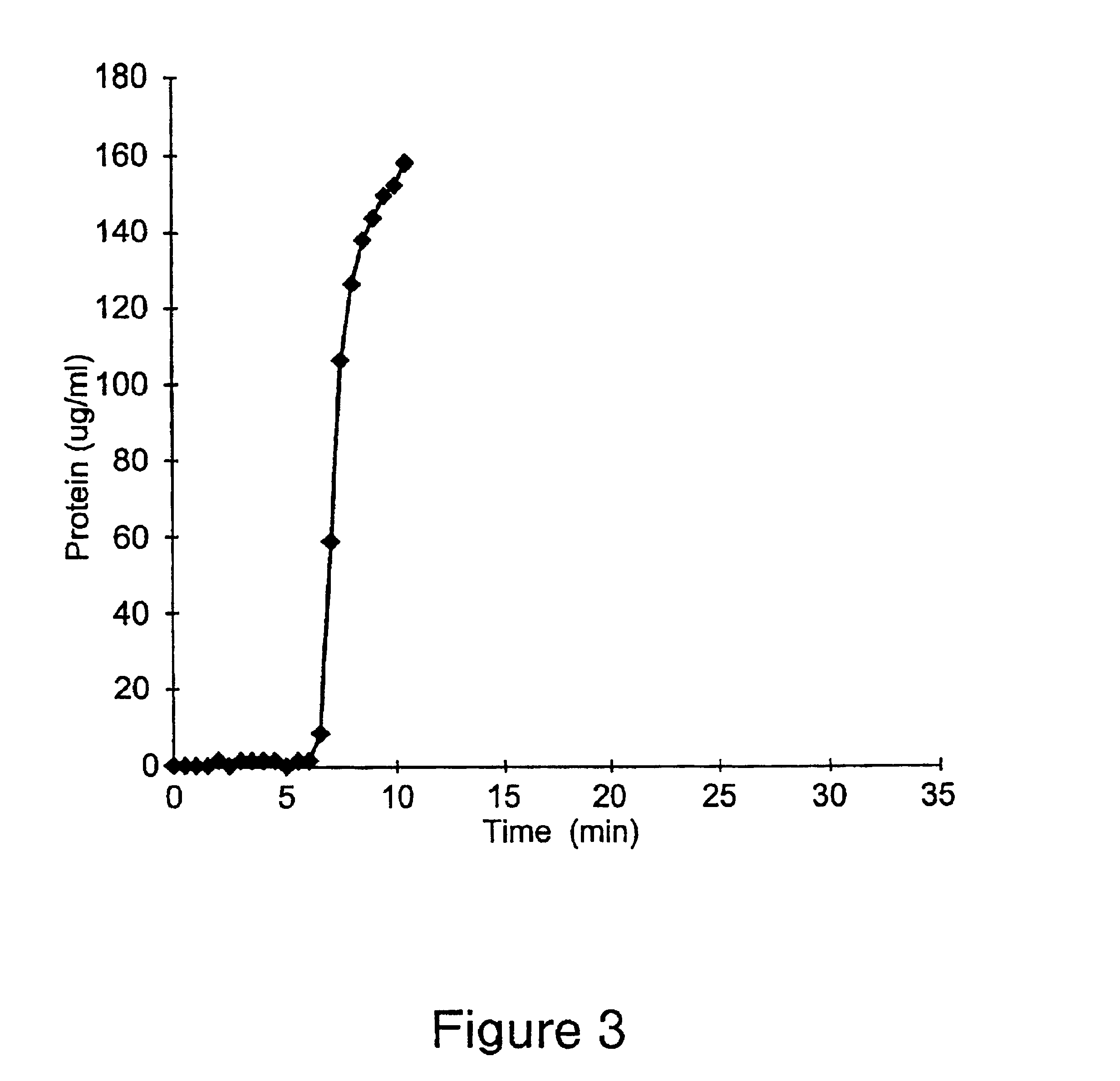Positively charged membrane
a positive-charge, membrane technology, applied in the direction of amphoteric ion exchangers, chemical/physical processes, water/sewage treatment by ion exchange, etc., can solve the problems of increasing material and process costs, difficult and/or laborious control of the chemistry of some of the membranes, and low ability to bind selected proteins of interes
- Summary
- Abstract
- Description
- Claims
- Application Information
AI Technical Summary
Benefits of technology
Problems solved by technology
Method used
Image
Examples
example 1
This Example illustrates a method of preparing an embodiment of the positively charged membrane of the present invention. This Example further illustrates the properties of the prepared membrane. A diallylamine copolymer was prepared first as follows. 5 grams of diallylamine were added to 59 grams of deionized water containing 12 grams of 50% hydrochloric acid solution. 30 grams of {3-(methacryloylamino)propyl}-trimethylammonium chloride (50% solution) were added and mixed. The pH of the resulting solution was adjusted to 5.0 by the addition of dilute sodium hydroxide. The above reaction mixture was purged with nitrogen for 2 hours at 50.degree. C.
Polymerization was initiated by the addition of 0.5 gram of ammonium persulfate. The polymerization was stopped after 2.5 hours. The resulting polymer solution was activated by reaction with epichlorohydrin. 20 grams of the above prepared copolymer solution were diluted with an equal amount of deionized water. The pH of the diluted solutio...
example 2
This Example illustrates a method of preparing another embodiment of the positively charged membrane of the present invention. This Example further illustrates the properties of the prepared membrane. A diallylamine copolymer was prepared. as follows.
A mixture containing 680 grams of water, 30 grams of concentrated hydrochloric acid, 30 grams of diallylamine, 46.2 grams of a 65% solution of diallyldimethylammonium chloride, grams of N-{3-(dimethylamino)propyl}-methacrylamide, and 180 grams of a 50% solution of 3-{methacryloylamino)propyl}-trimethylammonium chloride was prepared. The pH of the mixture was adjusted to 4.5, the solution was degassed, and polymerization was carried out. 3 grams of ammonium persulfate and 1.2 grams of sodium metabisulfite were added to initiate the polymerization. After the polymerization was completed, the pH of the polymer solution was further adjusted to 10.5, and 42.7 grams of epichlorohydrin was added to the solution. The resulting solution was held...
example 3
This Example illustrates a method of preparing yet another embodiment of the positively charged membrane of the present invention. This Example further illustrates the properties of the prepared membrane. A diallylamine copolymer was prepared as follows.
711 grams of deionized water, 30 grams of concentrated hydrochloric acid, 30 grams of diallylamine, 46.2 grams of a 65% solution of diallyldimethylammonium chloride, and 180 grams of a 50% solution of 3-{methacryloylamino)propyl}-trimethylammonium chloride were mixed, and the pH of the mixture was adjusted to 4.5 by the addition of hydrochloric acid (36%). The resulting solution was degassed, and polymerization was carried out using the combination of ammonium persulfate and sodium metabisulfite as the initiator. The pH of the resulting polymer solution was adjusted to 10.5, and 27.0 grams of epichlorohydrin were added. The mixture obtained was kept at a temperature of 45-60.degree. C. for several days, and then cooled to the ambient...
PUM
| Property | Measurement | Unit |
|---|---|---|
| Density | aaaaa | aaaaa |
| Density | aaaaa | aaaaa |
| Polarity | aaaaa | aaaaa |
Abstract
Description
Claims
Application Information
 Login to View More
Login to View More - R&D
- Intellectual Property
- Life Sciences
- Materials
- Tech Scout
- Unparalleled Data Quality
- Higher Quality Content
- 60% Fewer Hallucinations
Browse by: Latest US Patents, China's latest patents, Technical Efficacy Thesaurus, Application Domain, Technology Topic, Popular Technical Reports.
© 2025 PatSnap. All rights reserved.Legal|Privacy policy|Modern Slavery Act Transparency Statement|Sitemap|About US| Contact US: help@patsnap.com



